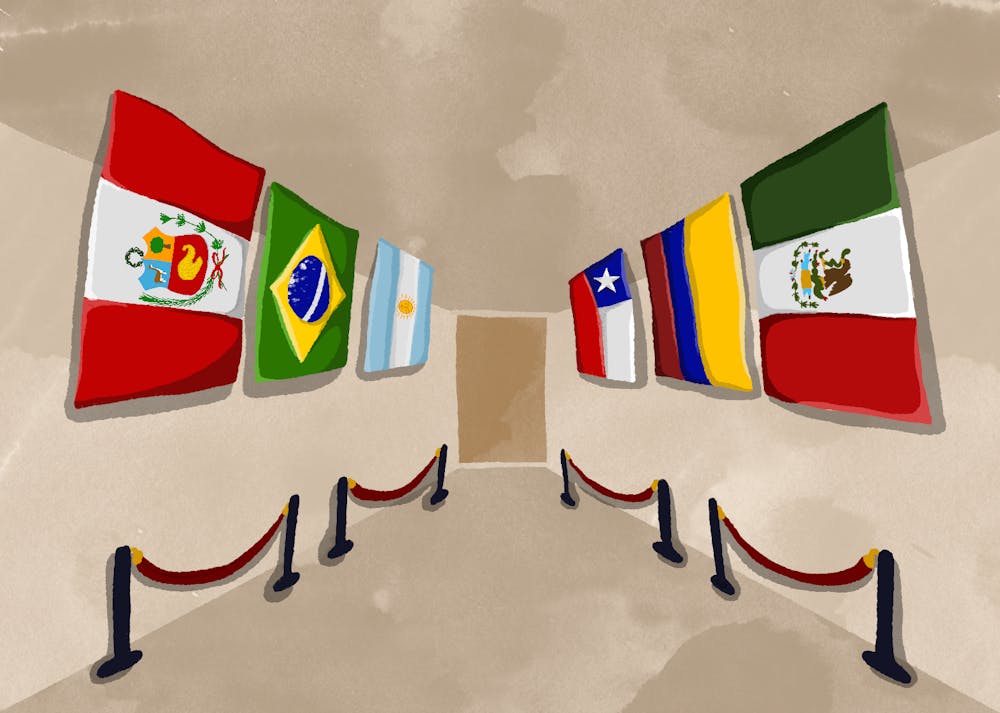The Latino Museum Studies Program Undergraduate Internship is a new 10-week program at The Smithsonian Institute that provides opportunities for Latinx students to find a career within the museum industry, eight out of the 20 students selected to participate for this semester were ASU students.
Though it initially started in 1994 as an opportunity exclusive to graduate students, the internship branched into a new program for undergraduates this year focusing on four core areas of museum practice: digital culture, exhibition design, museum, education and conservation.
The museum is partnered with Herberger Institute for Design and the Arts at ASU, The City College of New York, The University of Texas at El Paso and New Mexico State University; only students from these four schools can apply.
“The idea is that if we get to undergraduate students, early on, before they make up their minds, right, in other words before they get into graduate school, then we have a better opportunity to really ... hold their focus on museum work and museum studies, and the various fields around these,” said Eduardo Diaz, acting deputy director at the Smithsonian Latino Center.
Diaz noticed the lack of Latinx people in the Smithsonian, which pushed him to include younger students in the program to encourage them to have careers in museums.
“It's an opportunity for us to work with young Latinas and Latinos and help them and guide them and hopefully point them in a direction where they see working in a museum is something that they would like to do right from a professional perspective,” Diaz said.
The first two weeks of the program are dedicated to the participants having interactive tours and discussions with professionals within the museum industry.
“I thought to myself, you know, the Smithsonian is the largest employer of museum conservators of any institution in the country, if not the world, there are no Latino or Latina conservators at the institution,” Diaz said.
Ruby Maderafont, a junior museum studies major, had assumed this thought but it was confirmed after being informed through the program that only 3% of museum positions in the country are held by people in the Latinx community.
“It felt like a great experience to learn from people like me, who see these disparities and have to navigate the museum field and predominantly white institutions, especially the fact that they were partnering with the Smithsonian Institution, which is such a notable institution with high regard,” Maderafont said.
Francesca Galvan, a junior animation major, felt a lack of people similar to her represented in media growing up and found that the Smithsonian internship was a great opportunity to contribute to diversity.
“I never felt represented growing up, especially within the film industry – and so I'm really passionate about having my culture being shown on the big screen (and) being in these different forms of media,” Galvan said. “There's just so many ways of what being Latina is and there's not just one way to portray it, so I just really wanted to showcase my culture and to represent my community.”
At first, Galvan said she felt out of place in the program since she "didn't know what the museum had to do with animation." But later on, Galvan learned the importance of her work and what it brings to the institution.
Galvan has been placed within the Smithsonian Center for Folklife and Cultural Heritage to tell Latina stories for Folklife Magazine, which has the mission to “build understanding, strengthen communities, and reinforce our shared humanity” through sharing different cultures.
“It's been really helpful knowing what I want to do with my future and knowing that my background in animation, my background in being Latina, like these are things that can make a really big impact within the museum field,” Galvan said.
Edited by Jasmine Kabiri, Wyatt Myskow, Sophia Balasubramanian and Kristen Apolline Castillo.
Reach the reporter at caera@asu.edu and follow @CaeraLearmonth on Twitter.
Like The State Press on Facebook and follow @statepress on Twitter.

Caera Learmonth is a full-time reporter for the Community and Culture desk. She was previously the Executive Editor of her high school newspaper and has taken journalism programs at the School of the New York Times and University of Southern California.




